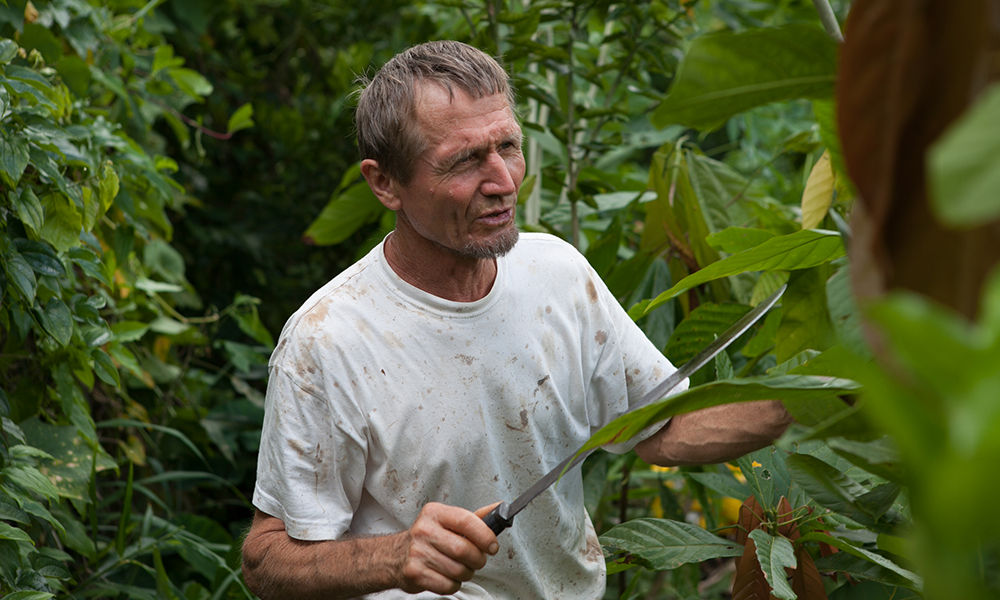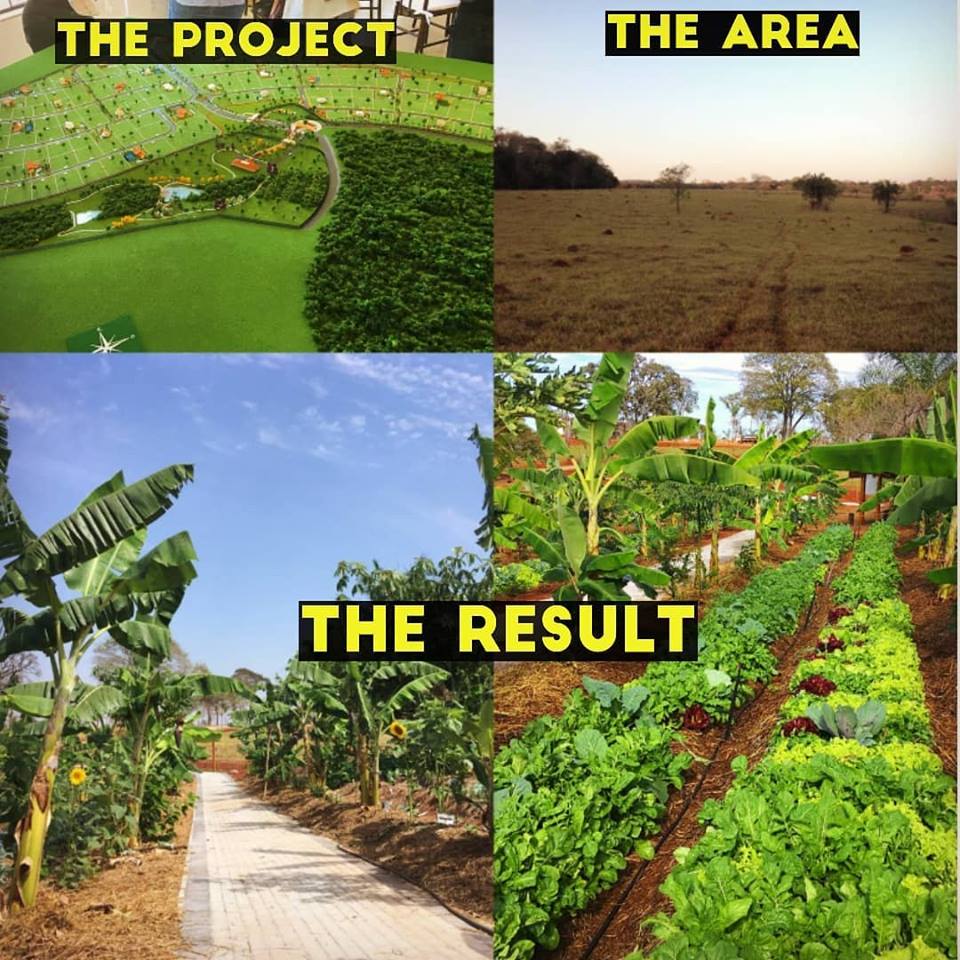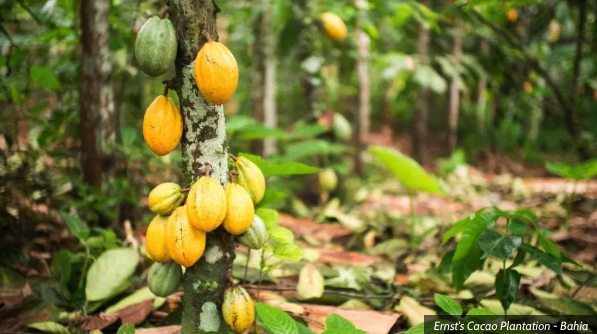
- Sustainable Planet -
- 5mins -
- 1,604 views
How one man transformed 500 hectares of degraded land in Brazil into a bountiful food forest
This Swiss farmer in Brazil turned a fully degraded landscape into an abundant Regenerative Agroforestry Farm, kickstarting a revolution in forestry and agriculture.
A Life in Syntropy: Enrnst Götsch brings a new way of producing food in forests to Brazil
The agroforestry movement is growing fast in Brazil. Across the country, people are now turning bare lands into bountiful food forests, inspired by Swiss-born Ernst Götsch who, 40 years ago, set out to perfect a system that would take agroforestry to the next level.
"Humans could reconcile themselves with the planet, finding a way to be used and welcomed in the [eco] system, but we don’t realize that. We can’t see because we have disconnected ourselves from life on the planet, thinking that we are the intelligent ones. We can’t see that we’re just part of an intelligent system." says Ernst Götsch in the video below.
Ernst Götsch: a true green revolutionary
Ernst Götsch’s farm is named Olhos D’Água (Tears in the Eyes). Located in Piraí do Norte in the South of Bahia, Brazil, the place is breathtaking due the surrounding lush forest, but the name of the farm refers specifically to the 17 springs found by the Swiss researcher and farmer.
When Götsch, now 70 years old, first settled in the region in the early 80s, the farm was called Fugidos da Terra Seca (Fugitives from the Dry Land), a degraded area that had been stripped bare by intensive logging and then abandoned.
An expert on natural systems, Götsch would rise at 5am, 7-days-a-week, to bring about his green revolution. One year, he planted 500 hectares of forest interspersed with cocoa, bananas and greenery.
A decade later, technicians from the Brazilian Institute for the Environment and Renewable Natural Resources (Ibama), in Salvador, were surprised when they saw aerial photographs of the region and went there to understand what was happening on the land of the ‘foreigner’, as Götsch had become known. The aerial view showed a dense forest, which hid a highly productive agricultural area.
Source: Believe.earth

Syntropic Agriculture: Bubbles of Life
The system Götsch adopted, later named syntropic agriculture, regenerated the fertility of the soil, revived the springs that had disappeared and brought the rain back, generating a continuous cycle of renewal.
How did he do it? “Working with nature and not against it,” says Götsch. “Through strategies that look like the way natural ecosystems work.”
This concept considers that all species are part of a macroorganism that works under the logic of cooperation and unconditional love of life. “Human beings are part of this system,” he says. “Instead of exploiters, we can be creators of resources.”
It took 15 years for Götsch’s method be named: it is now called syntropic agriculture. However, the term was already part of his vocabulary as a way to explain the power of ecological systems enhanced by human action.
“Each plant needs not only soil, fertilizer and water, but microclimatic conditions to develop,” says the researcher. “When farmers understand it, they create biodiverse ecosystems that offer each plant a life bubble, with no need of poison and fertilizer.”
In degraded areas, recovery is accelerated by depositing organic matter in the soil. It is common to see Götsch with a bowie knife in his hands, pruning branches that will decompose, developing fungi and bacteria that help to fix nutrients such as nitrogen in the soil.
Source: Believe.earth

How seedlings aid in the planting of crops
As they grow, saplings give shade and help restore the soil’s fertility. As soon as two months after planting, the farmer can begin harvesting vegetables and, then, pineapples, corn, manioc and vegetables, generating income to invest in the recovery of the area and in new crops.
Götsch developed this system when he was still living in Switzerland. He worked at Zurich-Reckenholz Institute researching genetic improvement. There he questioned whether it would not be more productive to improve the conditions of plants, provoking ecological balance, rather than breeding them to be genetically more pest-resistant.
After resigning from the Institute, he spent a few years testing his ideas on European soil and received invitations to put them into practice. In 1979, Götsch taught methods of sustainable agriculture in a Nicaraguan refugee shelter in Volcan de Buenos Aires in Costa Rica, during the civil war in Nicaragua.
In 1982, after the war, Götsch came to Brazil to advise a countryman struggling with unproductive land in Bahia. While there he bought Fugidos da Terra Seca, planning to revive it through reforestation and cocoa cultivation. Today, his farm exports high-quality organic cacao worth four times the price of the conventional product.
After years applying his knowledge to smaller ecosystems, the researcher began to successfully experiment with his methods on a larger scale.
Source: Believe.earth

A CULTURE OF REGENERATION
Götsch has since trained many farmers who now help him spread the method throughout different regions of Brazil as well as abroad. Sezefredo Gonçalves encountered the system in 1996.
That year, Götsch trained farmers in city of Barra do Turvo, in Vale do Ribeira in São Paulo. The agriculture prevalent in the area at that time was based on stripping the plantation and burning the remains in the field.
“We worked hard burning and poisoning the soil,” says the 76-year-old da Cruz. “Instead of profits, we had losses and became poorer every day. The poison killed the insects, which were called plagues. But the plague is the man who wants to destroy nature.”
With other pioneers of syntropic agriculture in the region, da Cruz began to help his fellow farmers migrate to this model. The impact on household incomes is visible. “We live in the forest, we harvest and see the value of everything the soil provides. Life is there, we just need to be careful and keep it.”
(Extracts from an original article in Portuguese for Believe.earth, by Inez de Oliveira)
Source: Believe.earth


